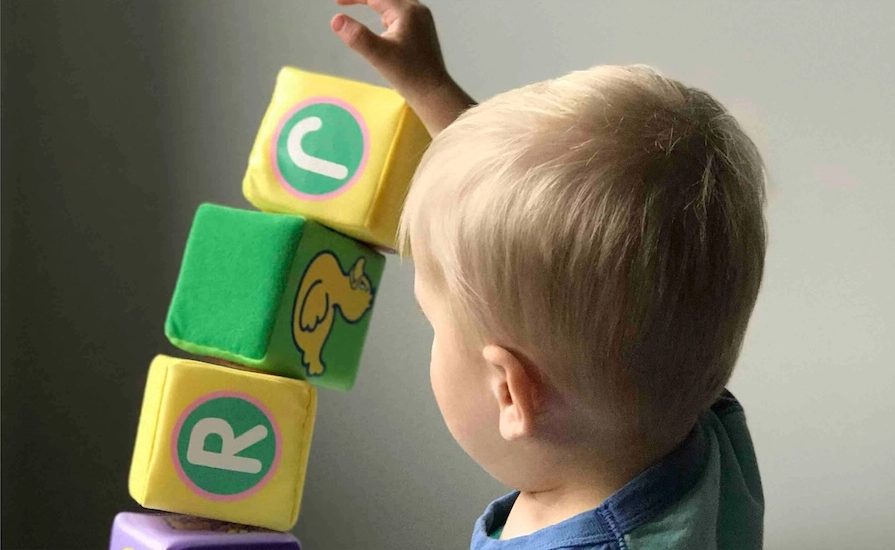Social Story Sampler
It is no surprise that some of the most frequently requested Social Stories are among the most difficult to write. The Stories in this Sampler address a few of those challenging topics. These are models that parents and professionals may use to develop Social Stories for a specific child, adolescent, or adult.
The Sampler contains Stories related to these concepts:
- Safety: Understanding safety may make it easier to follow some rules.
- Tragedies: What a tragedy is and understanding tragedies on television.
- Discovery of Self and Others: Each person is one of a kind.
- Advanced Concepts: Stories to address ‘elusive’ topics like stereotypes and resilience.
A few notes before you get started:
The Stories are arranged in a suggested sequence, according to concept areas and level of difficulty. They are designed to work together now, and over time. Reading the entire collection of Stories before selecting a starting point may be helpful. The ties between the Stories – and how they work together to build concepts – will become apparent.
A few Stories have two versions for level of difficulty or for a male or female Audience.
A Social Story may use an activity to make a point and share information. Such is the case with the “Peanut Butter Survey”. Or, an activity may be accompanied by a set of Stories, as is the case with “The Fingerprint Survey” and Stories.
Story and Activity List: Th e following is a sequential list of Stories and activities in The Sampler, followed by a brief description of each. Stories with two versions share one title, with the exception of the series of Stories about Emma and Tyler.
1 & 2. “Safety Wherever I Go” (1-Boy Version) and “Safety Wherever I Go” (2-Girl Version) use simple text and large illustrations to identify safety measures in several areas, including the physical environment (rails, gates, doors and locks), safety equipment (helmets, life jackets, seat belts), signs, and more. The repetitive format builds predictability into the content, reinforcing the reassuring message.
3. “What is a Tragedy?” introduces and defines key vocabulary, like tragedy and survivor, explains the events surrounding a tragedy, describes efforts to assist survivors, and encourages the audience to ask questions of trusted adults.
4. “Watching a Tragedy on Television” clarifies the confusing aspects of watching a newscast about a disaster on television. It reassures children throughout, opening with a news bulletin that interrupts regular programming. The Story covers several concepts, including but definitely not limited to: the distinction between what is happening on the screen versus the safety of home; how a single event may appear on television for many days (making it seem like a tragedy is reoccurring); and how a family’s typical routine usually resumes shortly, with the example of eating dinner. The Story closes with mention of efforts to help survivors.
5 & 6. “What Autism Means and What it Doesn’t Mean” (5) and “What Autism Means and What it Doesn’t Mean” (6) demonstrates how simple Story content and format can cover a relatively advanced or abstract concept. The Stories introduce a concept that echoes throughout The Social Story Sampler: autism is a personal factor, but it never defines who someone is. Story 6 contains more detail. Please note: Stories in The Sampler assume that readers with autism are aware of their diagnosis and understand it at a basic level.
7. “The Peanut Butter and Jelly Survey” uses peanut butter and jelly sandwich preferences to explore individual differences. This survey is geared to a younger Audience, although it is likely to be useful with children of any age, with or without autism.
8. “Everyone is Diagnosed Frequently” challenges the traditional interpretation of normal by pointing out that since everyone is diagnosed frequently, it is average or normal to have a diagnosis. The Story uses the example of Clark (pictured at left), who is a guy with over 35 diagnoses in the course of his 30-something life to date: His family and friends think he’s a pretty healthy guy. They’re right.
9. “The Difference Between Emma and Everyone Else” and 10. “The Difference Between Tyler and Everyone Else”, could be regarded as Social Story puzzles. The first paragraph announces Emma/Tyler is a lot like other people except for one huge difference. Both Emma and Tyler have autism, but that, of course, is not it. Building upon concepts from “Everyone is Diagnosed Frequently”, this Story has a bit of a surprise ending when the big difference between Tyler/Emma and everyone else is revealed. To develop an individualized version, the Story may be used to create an interview regarding a child’s personal information. A child or adolescent may then compare his or her Story with that of Emma and Tyler.
11. “The Fingerprint Survey” continues building the concept that each person is unique via drawings. Where The Peanut Butter and Jelly Survey focuses on personal preferences, this survey explores a more advanced level of personal differences. It demonstrates how a single instruction, for example, “Draw a stick figure doing something,” makes its way through an individual’s mind and past experiences before it becomes lines and colors on paper. It is a tangible way to demonstrate that each of us has a brain and life story that is uniquely ours, with clues to that story in our drawings and the thoughts that create them.
12. “Emma and Tyler Take the Fingerprint Survey” describes two sets of survey responses. Individuals who complete “The Fingerprint Survey” compare Emma and Tyler’s survey results with their own. Tyler serves as a healthy role model, too, as he does not like to draw but participates despite his lack of confidence.
13 & 14. “Fingerprints, Decisions, and Fingerprint Decisions” (13-Girl Version) and “Fingerprints, Decisions, and Fingerprint Decisions” (14-Boy Version) introduce and define the terms decision and fingerprint decision for the first time in The Sampler. It opens with a discussion of the difference in fingerprints between identical twins, moving on to other things that distinguish us from one another, like our brain, environment, and experiences. That leads to a summary of the different kinds of decisions that we make. The Story closes with a page devoted to a definition and discussion of fingerprint decisions.
15. “Learning About Skunks and Stereotypes” introduces and defines stereotypes. Skunks provide a tangible and universally recognized case example. The Story describes how stereotypes can be helpful in some cases, and damaging in others.
The description of both good and bad stereotypes lays the groundwork for future discussions of both. Adolescents are increasingly independent and it’s important to teach the ‘warning flags’ or constellation of cues that may mean trouble or a threat to personal safety. An example is driving and the quick judgments that it requires. Many of those judgments are stereotypes at work.
16. “What is it? It’s R _ _ _ _ _ _ _ _ _. A Puzzle Story” opens with a word puzzle that leads to a definition and discussion of resilience. The Story closes with a description of a very resilient man, Wilson Bentley (1865 – 1931).
The Sampler Stories are for any parent or professional seeking ideas and materials for use with the person or persons in their immediate care. I hope they will give you many ideas. You have my permission to download and print the Stories and activities for this purpose exclusively. Permission is not granted for professional presentations of any kind, duplication or distribution via any means, or for sale or profit.
Thank you,
Carol Gray, Author
The Social Story Sampler References
Project History and Story Guide
- National Center for Autism (2009). The National Autism Center’s national standards report: National standards project – Addressing the need for evidence-based guidelines for autism spectrum disorders. National Autism Center. Available online at http://www.nationalautismcenter.org/
The Difference Between Emma and Everyone Else
- The number of girls named Emma in the United States: http://www.namestatistics.com/search.php?name=Emma&type=first&gender=female
- The number of people visiting Disney World each year: Online estimates vary considerably from one source to another. In response to typing in, “How many people visit Disney World each year?” on a Google Search, the numbers used in the Stories are the lowest and highest estimates found.
- The number of people living in New York, New York: http://quickfacts.census.gov/qfd/states/36/3651000.html
- The number of people who live in an apartment in New York City: http://www.chacha.com/question/how-many-people-live-in-an-apartment-building-in-new-york-city
The Difference Between Tyler and Everyone Else
- The number of people named Tyler in the United States: http://www.namestatistics.com/search.php?name=Tyler&type=first&gender=male
- The number of people visiting Disney World each year: Online estimates vary considerably from one source to another. In response to typing in, “How many people visit Disney World each year?” on a Google Search, the numbers used in the Stories are the lowest and highest estimates found.
- The number of people living in Wisconsin: http://quickfacts.census.gov/qfd/states/55000.html
- The number of farms in the United States: http://www.infoplease.com/ipa/A0883511.html
What is it? A Story Puzzle
- YAHOO! Kids Children’s Dictionary: http://kids.yahoo.com/reference/dictionary/english/search?query=resilience
Illustrations by Deposit Photos http://www.depositphotos.com
Let’s Connect
Have questions or a webinar request? Complete the form and let’s connect!




